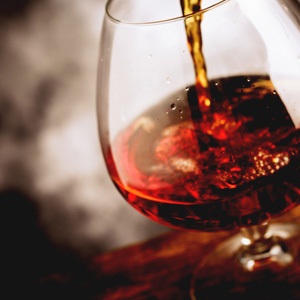What is a fortified wine?
It’s one that’s been given an extra alcoholic kick by the addition of some brandy or other spirit.
In SA, most fortified wines are sweet (even ones which say they are dry!) but they balance the sweetness with rich flavours of nuts, toffee, coffee and spice and make fantastic accompaniments to winter food.
How should you serve a fortified wine?
Nowadays, fortified wines are a bit untrendy, viewed as ‘Grandmother’s drinks’ and not something seriously considered by younger drinkers.
This is such a pity because fortified wines are one of the things SA does best of all and we should celebrate our expertise and our delicious wines. Most of the problems people have with fortified wines are to do with how they are served.
Here are 3 absolute rules you should always follow:
1. Serve them at the correct temperature. Most fortified wines are better served from the fridge – the alcohol will be warming enough so don’t worry about the chill! It just helps rein in the sweetness and balances the wine better.
2. Serve them in a BIG glass. None of these tiny schooners or little liqueur glasses – a tumbler or water glass is better!!
3. Drink them up quickly. The shelf life of an open bottle of fortified wine is less than 3 weeks. Not from one Christmas to the next – 3 weeks.
Here are some of the major styles of fortified wines in SA and some suggestions of which ones to choose.
Sherry:
Legally, SA cannot use the word ‘sherry’ because that only refers to fortified wines from Spain. So we tend to use ‘Cape Full Cream’ or ‘Cape Pale Dry’ instead.
I much prefer the Medium and Cream styles of sherry and really enjoyed KWV’s range (R68 & R70 respectively) which I tasted last night paired with food. Tangy blue cheese soufflé and smoked meat were excellent accompaniments for these nutty, toffee, coffee mouthfuls, both wines balancing out the sweetness with a warming alcoholic nip.
Try them both with this recipe for Twice-baked Gruyere Souffle with Wholegrain Mustard – yum!
Port:
Again, a banned term in SA so we generally describe the style of wine and preface it with ‘Cape’.
There are basically 2 kinds of ports – red ones (labelled Ruby or Vintage) and brown ones (labelled Tawny) – and the style depends on whether it was bottled at a young age or allowed to oxidise in a barrel first.
The red ones are full of fruit and Christmas cake, raisined spices and goodness. Try Muratie’s Ben Prins 2009 (R170) for concentrated layers of flavour and a wamring, lingering aftertaste.
When it comes to tawny ports, expect fairly similar flavours to cream sherry and but with more raisined fruit and often more complexity. Bargain of the day has to be the KWV Tawny (R80), a 5 Star stunner from Platter which totally over-delivers in terms of balance, length and waves of flavour which seem to never end.
KWV paired it with camembert, I’d choose a hearty French Onion Soup.
Muscadel and Jerepigo:
These are wines made by adding brandy or spirit directly to grape juice. If the grapes in question are a variety of Muscat, then it can be labelled as Muscadel. If not, then it is labelled Jerepigo.
When young, these wines are sweet and simple, but if you can age them for some time, expect richness, warmth, spice and wonderful baked fruit flavours.
Again, KWV have a good-value offering in this category with the Red Muscadel (R61) matching a spoonful of chocolate ganache particularly well last night, but you can also try Badsberg’s Red Muscadel 2013 (R55), recently named as SA’s best at the Muskadel Awards.
Fragrant and delicate with some elegance and spice, this is a wine to enjoy now with Chocolate and Cranberry Brownies or savour in 10 years’ time.

